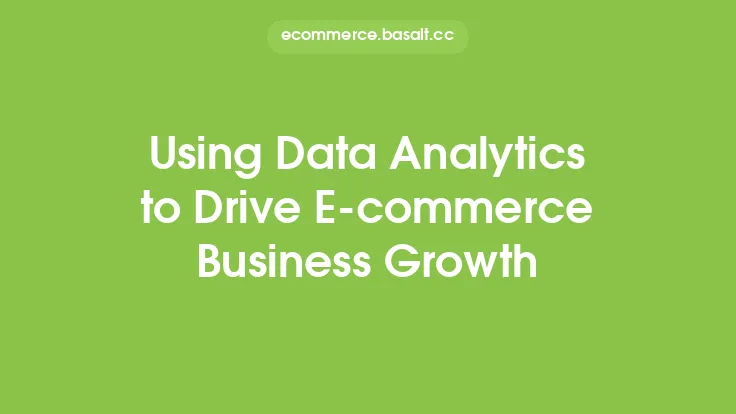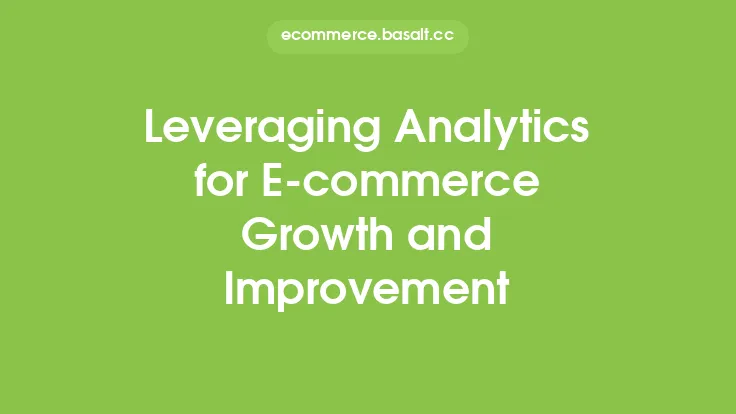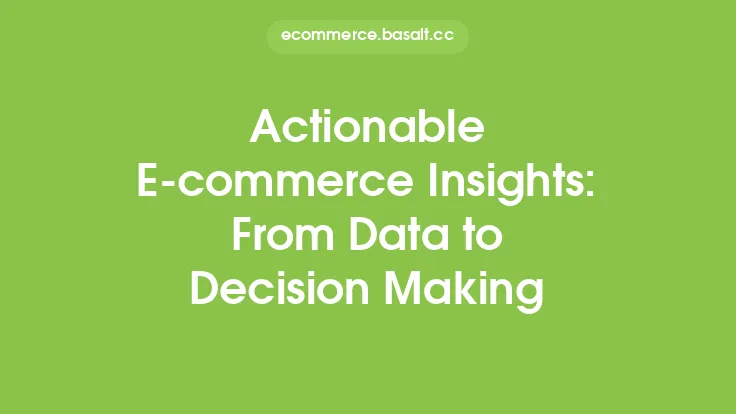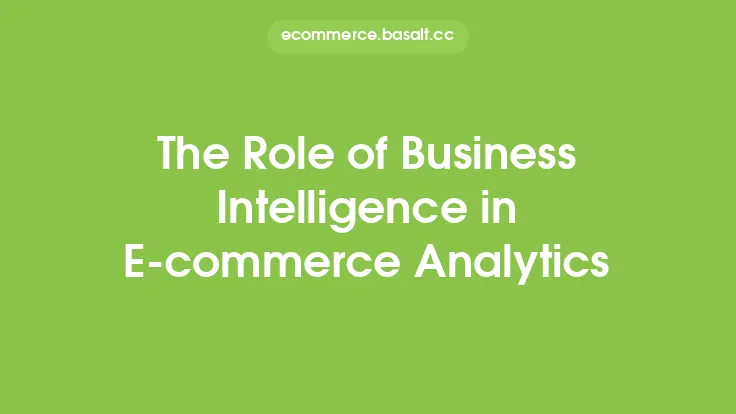The world of e-commerce is becoming increasingly competitive, and businesses are looking for ways to stay ahead of the curve. One key area that can provide a significant advantage is advanced analytics techniques. By leveraging these techniques, e-commerce companies can unlock growth, improve customer experiences, and increase revenue. In this article, we will explore the various advanced analytics techniques that can be used to drive e-commerce growth, and provide insights into how to implement them effectively.
Introduction to Advanced Analytics Techniques
Advanced analytics techniques refer to the use of sophisticated statistical and mathematical methods to analyze data and extract insights. These techniques can be applied to various aspects of e-commerce, including customer behavior, market trends, and operational efficiency. Some common advanced analytics techniques used in e-commerce include predictive modeling, clustering analysis, decision trees, and neural networks. These techniques can help e-commerce businesses to identify patterns, predict future trends, and make data-driven decisions.
Predictive Modeling for E-commerce Growth
Predictive modeling is a powerful advanced analytics technique that can be used to forecast future sales, customer behavior, and market trends. By analyzing historical data and using statistical models, e-commerce businesses can predict future outcomes and make informed decisions. For example, a predictive model can be used to forecast demand for a particular product, allowing the business to adjust inventory levels and pricing strategies accordingly. Predictive modeling can also be used to identify high-value customers, predict churn rates, and optimize marketing campaigns.
Clustering Analysis for Customer Segmentation
Clustering analysis is another advanced analytics technique that can be used to segment customers based on their behavior, demographics, and preferences. By grouping customers into distinct clusters, e-commerce businesses can tailor their marketing strategies, product offerings, and customer experiences to meet the specific needs of each cluster. For example, a clustering analysis may reveal that a particular group of customers is more likely to purchase luxury products, while another group is more price-sensitive. This information can be used to create targeted marketing campaigns, optimize product recommendations, and improve customer satisfaction.
Decision Trees for Operational Efficiency
Decision trees are a type of advanced analytics technique that can be used to optimize operational efficiency in e-commerce. By analyzing data on customer behavior, order fulfillment, and supply chain operations, decision trees can identify areas for improvement and provide recommendations for optimization. For example, a decision tree may reveal that a particular shipping method is more likely to result in delayed deliveries, while another method is more reliable. This information can be used to optimize shipping strategies, reduce costs, and improve customer satisfaction.
Neural Networks for Personalization
Neural networks are a type of advanced analytics technique that can be used to personalize customer experiences in e-commerce. By analyzing data on customer behavior, preferences, and demographics, neural networks can identify patterns and predict future behavior. For example, a neural network may predict that a particular customer is likely to purchase a certain product based on their browsing history and purchase behavior. This information can be used to create personalized product recommendations, optimize marketing campaigns, and improve customer engagement.
Implementing Advanced Analytics Techniques
Implementing advanced analytics techniques in e-commerce requires a combination of technical expertise, business acumen, and strategic planning. The first step is to identify the business problems that need to be solved, and then determine which advanced analytics techniques are best suited to address those problems. The next step is to collect and prepare the data, which may involve integrating data from multiple sources, cleaning and transforming the data, and applying data quality checks. Once the data is prepared, the advanced analytics technique can be applied, and the results can be interpreted and used to inform business decisions.
Best Practices for Advanced Analytics in E-commerce
To get the most out of advanced analytics techniques in e-commerce, there are several best practices that should be followed. First, it's essential to have a clear understanding of the business problems that need to be solved, and to define specific goals and objectives for the advanced analytics project. Second, it's crucial to have access to high-quality data, and to apply data quality checks to ensure that the data is accurate and reliable. Third, it's essential to have the right technical expertise and tools to apply the advanced analytics technique, and to interpret the results correctly. Finally, it's vital to have a culture of data-driven decision making, and to use the insights generated by advanced analytics to inform business decisions.
Common Challenges and Limitations
While advanced analytics techniques can provide significant benefits for e-commerce businesses, there are also common challenges and limitations that need to be addressed. One of the main challenges is the complexity of the techniques, which can require significant technical expertise and resources to implement. Another challenge is the quality of the data, which can be affected by issues such as missing values, outliers, and biases. Additionally, advanced analytics techniques can be sensitive to changes in the market, customer behavior, and other external factors, which can affect their accuracy and reliability. Finally, there may be limitations in terms of scalability, interpretability, and actionability, which can affect the ability to implement the insights generated by advanced analytics.
Future of Advanced Analytics in E-commerce
The future of advanced analytics in e-commerce is exciting and rapidly evolving. With the increasing availability of data, advances in computational power, and improvements in machine learning algorithms, advanced analytics techniques are becoming more accessible and effective. Some of the emerging trends in advanced analytics include the use of artificial intelligence, natural language processing, and computer vision to analyze customer behavior, preferences, and demographics. Additionally, there is a growing focus on real-time analytics, which can provide instant insights and recommendations to inform business decisions. As the field of advanced analytics continues to evolve, we can expect to see more innovative applications and use cases in e-commerce, and significant benefits for businesses that adopt these techniques.





